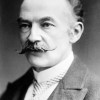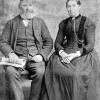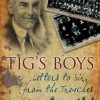Around 1550 Thomas Sydenham uprooted his family from the small Somerset village of Stogumber tucked away in a valley between the Quantock and Brendon Hills in the west of that county and came to Wynford Eagle, where he took up residence in the Manor House. There is evidence that members of the Sydenham family were already in the area. Nowadays known as Manor Farm this charming old house with its interesting old chimneys, gables and mullions, not to mention the large stone eagle that adorns the impressive west façade, the emblem of the Norman, Lord Gilbert de Aquila, was rebuilt in 1630 by William Sydenham and has been weathered by the sun and winds of centuries.
On January 8th 1569/60 Thomas married his second wife Jane Ryves at Wynford Eagle. For a century and a half Thomas’s descendants prospered here holding firm when Civil War shattered the peace and tranquillity of this small parish; the war saw the loss of a mother and a son but the family survived to see quieter times again.
William Sydenham was born in 1593 and inherited from his grandfather, his own father having died when he was only one year-old. William was a rich man who married well. On the 4th of November 1611 at Wynford Eagle he was joined together in holy matrimony with Mary, the daughter of Sir John Jeffrey, Knight of Catheston Manor. Sir John’s tomb with his effigy is in the north wall of the chancel in the church of St. Candida and Holy Cross at Whitchurch Canconicorum.
Here at Wynford Eagle the couple’s early years together would have been a happy time. William and Mary had ten children; two sons were destined to become famous in their individual fields. Even to this quiet backwater tragedy and sorrow dared to come when father and sons William, Thomas, Francis and John took up arms for Parliament in the Civil War.
Their father was taken prisoner at Exeter when that town fell to the Royalists on 4 September 1643 and in August of the following year their mother Mary was murdered on the doorstep of the Manor House by Royalist troops.
Church records for the period are incomplete and some have deteriorated to a point where it is difficult to read them, nevertheless it is possible to gather information about some of the events in the lives of members of the family.
The eldest boy William was baptised at Wynford Eagle on the 8th of April 1615 and he married Grace Trenchard of Warmwell in 1637. He was a parliamentarian army officer and by April 1644 had achieved the rank of Colonel. On 17th of June 1644 the Earl of Essex appointed him Governor of Weymouth. He was appointed Lord Sydenham under the protectorate and on the restoration of the Long Parliament he became a member of the committee of safety and the council of state. He died in July 1661 and was buried at Wynford Eagle; his widow died a few days later.
On the 30th November 1644 at Poole Major Francis Sydenham spotted the man thought responsible for killing his mother, a Major Williams. Determined to revenge his mother’s slaying he with sixty of his soldiers charged at the Royalists and beat them back all the way to Dorchester where he singled out Williams, shot him and trampled him under his horse. Francis Sydenham died in February 1645 defending Weymouth. It is thought his brother Thomas may have been wounded during the skirmishes that followed the Royalist take over of the town.
Thomas was baptised at Wynford Eagle on the 10th of September 1624 and in the little parish church of St.Lawrence in 1655 he married Mary Gee. Thomas had been at Magdalen Hall in Oxford and returned there in1647 following the end of the first Civil War. In 1651 military service again required him to leave Oxford. He became famous in the field of medicine. He died on the 29th of December 1689 at his home in Pall Mall, London. (We will shortly be publishing a biographical piece about his life and career.)
John was a Lieutenant in the Parliamentary Army but we have found little more about him other than documents suggesting he may have pursued a career in medicine and travelled abroad.
After the Royalist stronghold at Sherborne was taken by Cromwell and Fairfax there was less fighting in Dorset. The first Civil War ended in June 1646.
Elizabeth Sydenham, a daughter of William Sydenham Senior, married Roger Sydenham of Skillgate, Somerset in 1642 and her sister, Martha married William Lawrence Snr of Wraxall, Somerset in 1649.
Another sister, Marey, married Richard Lee of Winsdale in Hampshire. They had a daughter Mary who was well known as an intellectual feminist and poet. She was born in 1656 and she married Sir George Chudleigh of Ashton, Devon. Her five year-old brother died when she was eleven and a baby sister died when she, Mary, was sixteen. Her younger brother by twenty years died when he was twenty five in 1701.
The Manor House at Wynford Eagle was inherited by Colonel William Sydenham’s son William and in 1662 he married Martha Michel of Kingston Russell and they had two sons and two daughters. The financial cost of fighting the Civil War had taken a toll on the family fortunes and by the mid 1680’s William was borrowing against the family home and estates and the reputation of a great family was on the verge of being ruined. William devised a plan, perhaps better described as a fiddle or what today we would call a scam, involving a lottery where the Manor House and estate was the prize.
The story of this prominent family ended in more than tears: the family name disgraced, the house and estate lost, and William Sydenham in Dorchester prison where he remained until his death in 1709.
We will tell the full story of the “Sydenham fraud” in a separate article.



